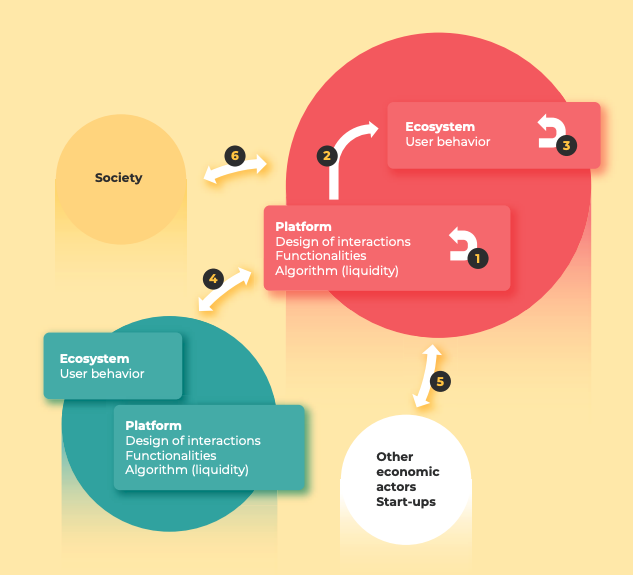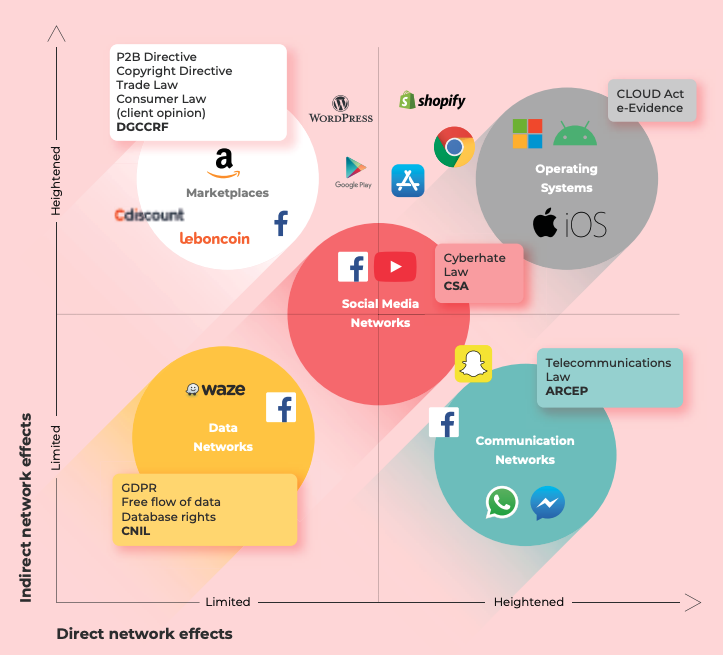Publication 11 May 2020
Regulating digital platforms: Why and how?

The purpose of competition law is not to create digital champions
While it seems necessary to improve competition law, it is important not to deviate from it. In this respect, several avenues must be explored. The accumulation of data, for example, could be considered as a barrier to entry into a market. In that case, imposing interoperability between digital platforms would promote competition. But interoperability is not sufficient, per se, to ensure competition. Rather, it is the skills and resources deployed by the platforms that give them a competitive advantage.
The regulation of digital platforms must also take into account the fact that these players pose problems that go beyond the economic and competition fields: they can generate negative externalities and raise issues in the societal and political fields.
The principal regulatory challenges for digital platforms
A strong will from the legislator is needed
The informational asymmetries of digital platforms could be removed by requiring them to have access to their data and/or certain algorithms deemed central. This would make it possible to implement regulation in real time and not ex post – as is the case today, where the time taken for decisions reduces their effectiveness.
It would also make it possible to resolve the limits of ex ante regulation, given the unpredictability of innovations and uses of these technologies. However, this approach requires a strengthening of the means and skills of regulators.
For a robust and shared definition of “systemic platforms”
Without a precise proposal, the legal construction for regulating “systemic platforms” is fragile. This definition should include all the dimensions of digital platforms (several faces, ecosystem, technological infrastructure) and specify the negative externalities – outside the economic field – that differentiate them from other economic players.
The regulation of these platforms could be similar to prudential supervision as it exists in financial markets. Their financial flows are mainly real-time advertising flows, observable from APIs that the regulator could impose.
The major categories of digital platforms
Users must be integrated into regulation
Users of digital platforms contribute significantly to the creation of value on these platforms. Therefore, they should be integrated in their regulation.
In this respect, the regulation of digital platforms could be based on two complementary approaches. The first would be to impose user representation in their governance and decision-making bodies. The second would be to “platformise” the regulator, by involving users in regulation by means of a digital platform, and by building appropriate tools (indicators, algorithms, etc.).
-

Publication 3 August 2020
Digital platforms: For a real-time and collaborative regulation
-

Publication 3 July 2020
Moderating our (dis)content: renewing the regulatory approach
-

Publication 11 May 2020
Regulating digital platforms: Why and how?


